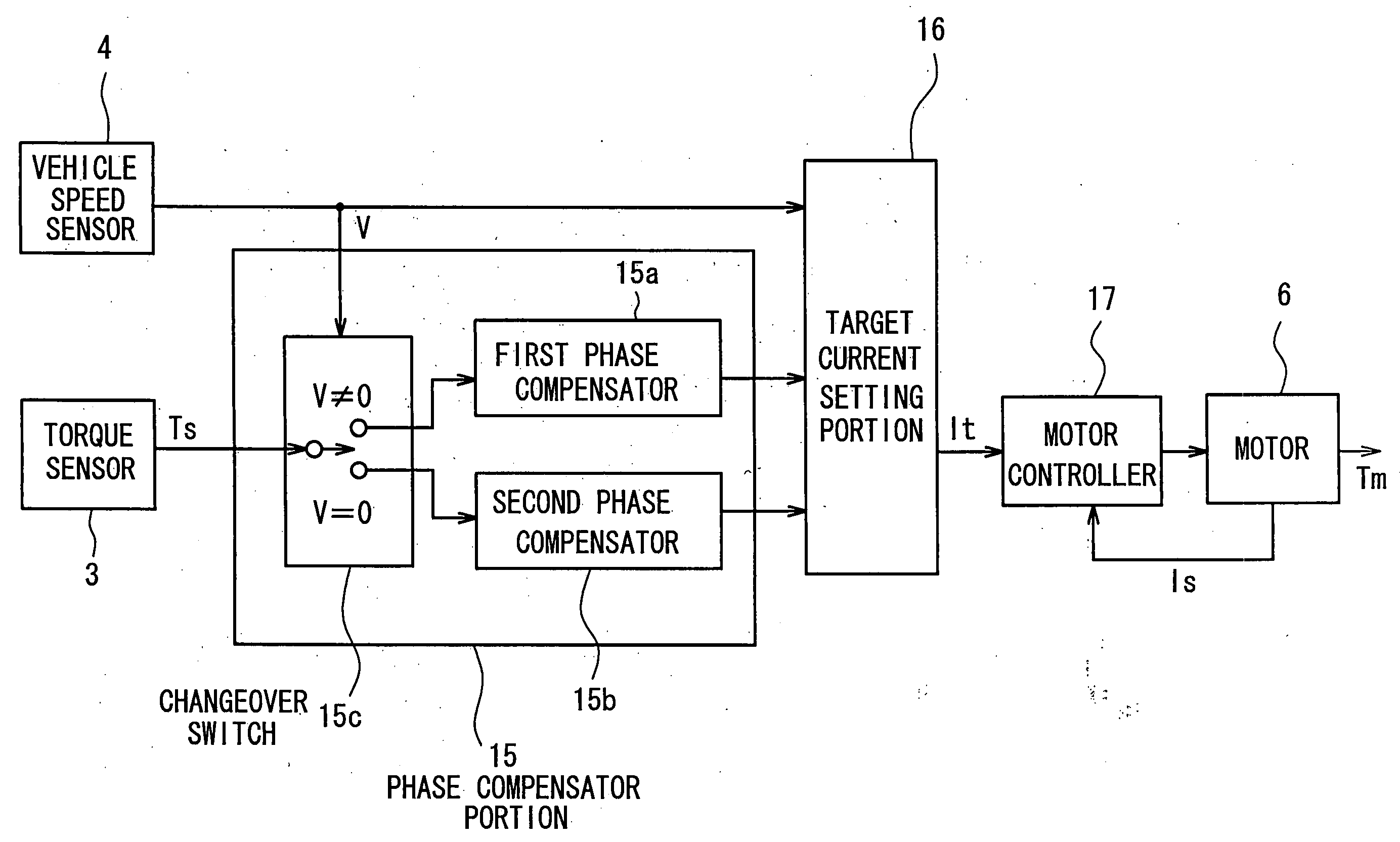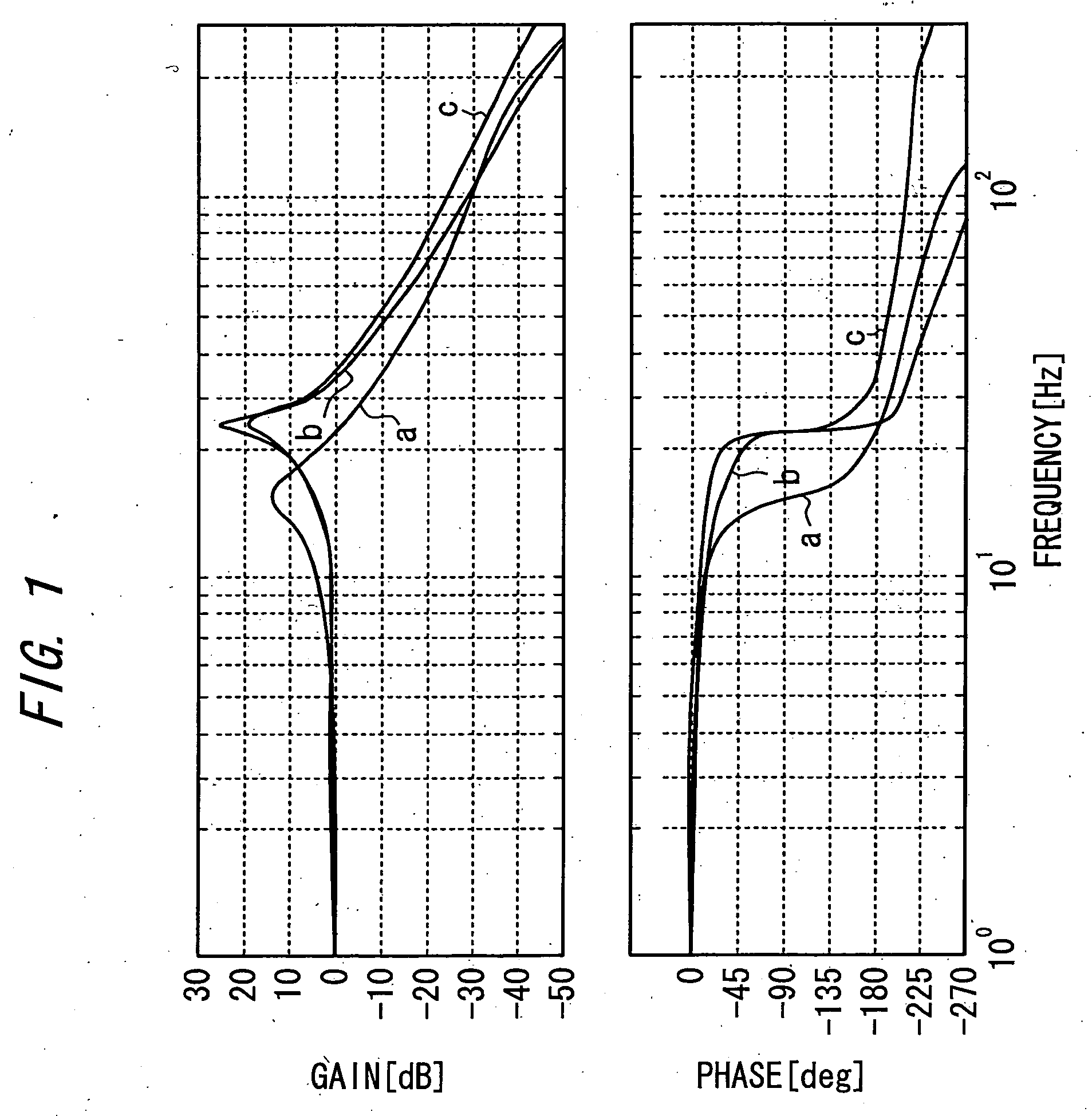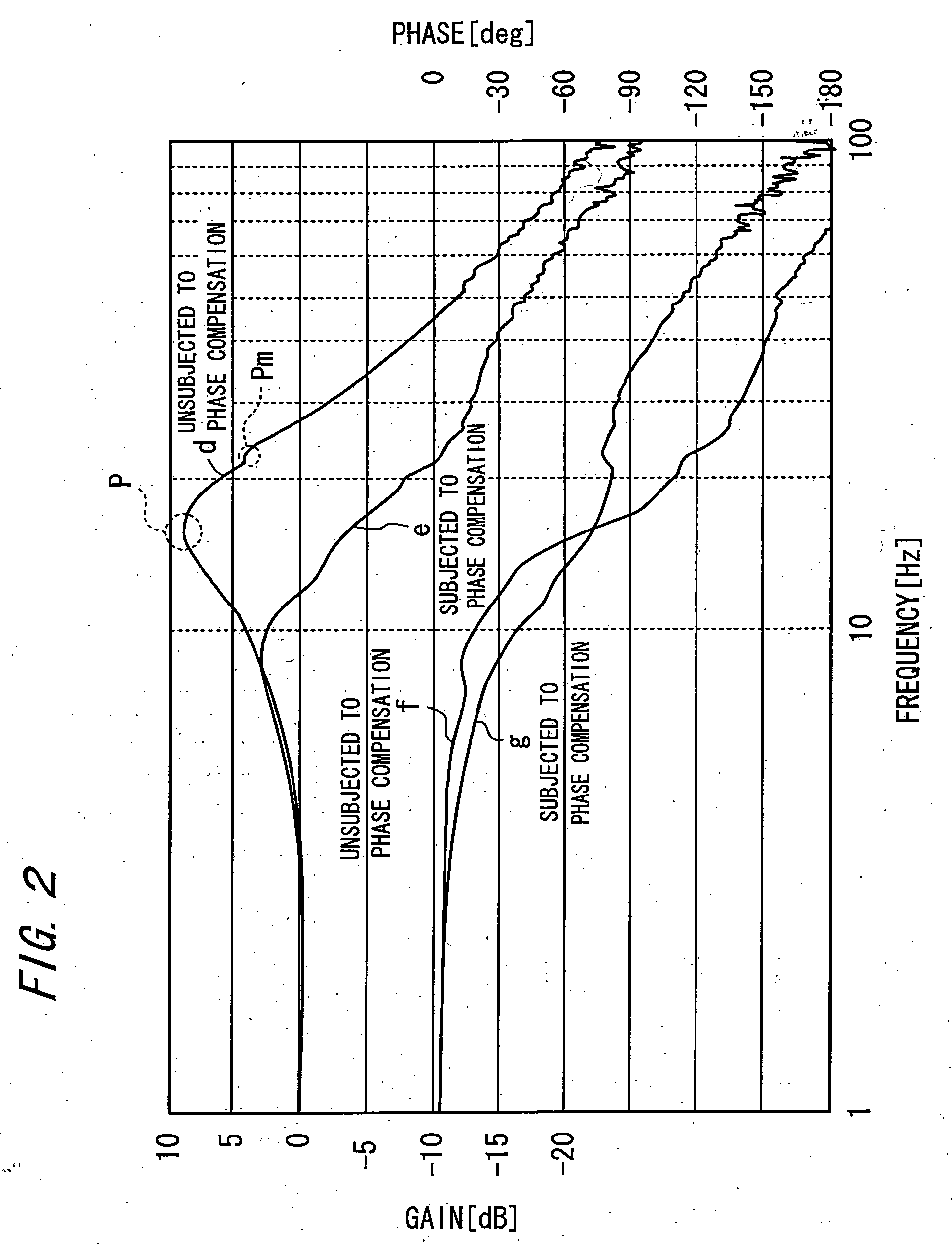Eletric power steering system
a technology of electric power steering and steering wheel, which is applied in the direction of steering initiation, instruments, vessel construction, etc., can solve the problems of system destabilization (or is prone to vibration), driver may experience a loadless steering feeling, and drawbacks even more significant, so as to achieve reliable stability and improve response
- Summary
- Abstract
- Description
- Claims
- Application Information
AI Technical Summary
Benefits of technology
Problems solved by technology
Method used
Image
Examples
Embodiment Construction
[0035] First, a basic study for phase compensation design will be described.
[0036] The aforementioned conventional technique related to the phase compensation in the control design for the electric power steering system has been proposed as a measure for compensating for a peak of natural vibration frequencies of a mechanical system (hereinafter, referred to as “mechanical-system peak”) , which are mechanical resonant frequencies. However, the technique does not consider an influence of a counter-electromotive force of a motor. According to the conventional technique, a peak of a system gain characteristic of the electric power steering system or of a gain characteristic of open-loop transfer function for torque (hereinafter, referred to as “system peak”) is regarded as the peak of the mechanical system. However, the results of the following simulation revealed that the counter-electromotive force in the motor exerts such a significant influence on the characteristics of the system...
PUM
 Login to View More
Login to View More Abstract
Description
Claims
Application Information
 Login to View More
Login to View More - R&D
- Intellectual Property
- Life Sciences
- Materials
- Tech Scout
- Unparalleled Data Quality
- Higher Quality Content
- 60% Fewer Hallucinations
Browse by: Latest US Patents, China's latest patents, Technical Efficacy Thesaurus, Application Domain, Technology Topic, Popular Technical Reports.
© 2025 PatSnap. All rights reserved.Legal|Privacy policy|Modern Slavery Act Transparency Statement|Sitemap|About US| Contact US: help@patsnap.com



